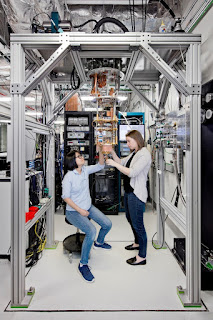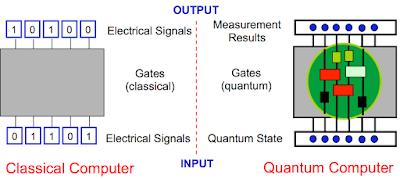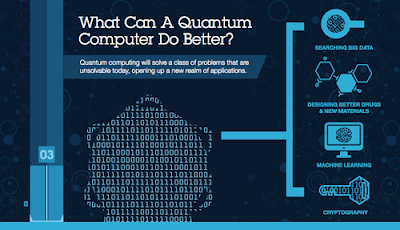Twitter Feed
Craigslist.org Founder Hypes Government Transformation
Craig Newmark, best known for being the founder of the Craigslist website, is working hard to get the word out on Gov2.0. Last week in FedScoop, he really laid out…
Maria Spinola: An Essential Guide to Cloud Computing
Maria Spinola, a Strategic IT Marketing and Innovation Adviser and editor at www.Cloudviews.org, has recently published An “Essential Guide to Possibilities and Risk of Cloud Computing“. Her very pragmatic approach…
US Interior Department IT Infrastructure Vision
Tim Quinn, Chief Infrastructure Officer, US Department of Interior, sees IP convergence as a key part of DoI’s future IT infrastructure. During the Federal News Radio Executive Forum, he also…
DHS Acting CIO Margie Graves on Current DHS Challenges
During the Federal News Radio Executive Forum, Department of Homeland Security (DHS), Acting CIO, Margie Graves provides a unique insight on the department. In her remarks, she described the challenges…
DHS EAGLE & First Source Digital Guide Launched
The Enterprise Acquisition Gateway for Leading Edge Solutions (EAGLE) is a multiple-award indefinite delivery/indefinite quantity (IDIQ) contract vehicle, specifically designed as the preferred source of information technology (IT) services for…
Looking Forward To GovIT Expo!
I am humbled and more than pleased to serve as the Technical Chair of SYS-CON’s 1st Annual Government IT Conference & Expo. To highlight the importance of this conference, I…
Publishing Synergy: Blog, Twitter and Ulitzer
Have you ever been given the task of building and executing an aggressive customer outreach program? Well I received my assignment about a year ago and trust me; the budget…
Input: Cloud Computing, Security to Drive US Gov’t IT Spending
According to a PC World article, cloud computing and cybersecurity will be the high-growth areas for government IT spending over the next few years. The analysis and consulting firm Input…
GovIT Expo 2009
I’m happy to announce my appointment by SYS-CON to be the Technical Chair of the 1st Annual Government IT Conference & Expo. This event is a 1-day deep dive into…
NCOIC To Help FAA on NextGen
Today, the U.S. Federal Aviation Administration (FAA) and the Network Centric Operations Industry Consortium (NCOIC™) announced an agreement to work together to advance the Enterprise Architecture of NextGen, FAA’s national…
- The release of a new API (Application Program Interface) for the IBM Quantum Experience that enables developers and programmers to begin building interfaces between its existing five quantum bit (qubit) cloud-based quantum computer and classical computers, without needing a deep background in quantum physics.
- The release of an upgraded simulator on the IBM Quantum Experience that can model circuits with up to 20 qubits. In the first half of 2017, IBM plans to release a full SDK (Software Development Kit) on the IBM Quantum Experience for users to build simple quantum applications and software programs.
The IBM Quantum Experience enables anyone to connect to IBM’s quantum processor via the IBM Cloud, to run algorithms and experiments, work with the individual quantum bits, and explore tutorials and simulations around what might be possible with quantum computing. Since its launch less than a year ago, about 40,000 users have run over 275,000 experiments on the IBM Quantum Experience. It has become an enablement tool for scientists in over 100 countries and, to date, 15 third-party research papers have been posted to arXiv with five published in leading journals based on experiments run on the Quantum Experience.
 The broad availability of quantum computing capability could prove to be a significant blow to current data encryption practices. In 2015 the US National Security Agency actually advised US agencies and businesses to prepare for a time when the cryptography protecting virtually all e-mail, medical and financial records, and online transactions would be rendered obsolete by quantum computing. The US National Institute for Standards and Technology (NIST) is also running a competition to spur work on post-quantum algorithms.
The broad availability of quantum computing capability could prove to be a significant blow to current data encryption practices. In 2015 the US National Security Agency actually advised US agencies and businesses to prepare for a time when the cryptography protecting virtually all e-mail, medical and financial records, and online transactions would be rendered obsolete by quantum computing. The US National Institute for Standards and Technology (NIST) is also running a competition to spur work on post-quantum algorithms. - Drug and Materials Discovery: Untangling the complexity of molecular and chemical interactions leading to the discovery of new medicines and materials;
- Supply Chain & Logistics: Finding the optimal path across global systems of systems for ultra-efficient logistics and supply chains, such as optimizing fleet operations for deliveries during the holiday season;
- Financial Services: Finding new ways to model financial data and isolating key global risk factors to make better investments;
- Artificial Intelligence: Making facets of artificial intelligence such as machine learning much more powerful when data sets can be too big such as searching images or video; or
- Cloud Security: Making cloud computing more secure by using the laws of quantum physics to enhance private data safety.
This content is being syndicated through multiple channels. The opinions expressed are solely those of the author and do not represent the views of GovCloud Network, GovCloud Network Partners or any other corporation or organization.
( Thank you. If you enjoyed this article, get free updates by email or RSS – © Copyright Kevin L. Jackson 2017)
Cloud Computing
- CPUcoin Expands CPU/GPU Power Sharing with Cudo Ventures Enterprise Network Partnership
- CPUcoin Expands CPU/GPU Power Sharing with Cudo Ventures Enterprise Network Partnership
- Route1 Announces Q2 2019 Financial Results
- CPUcoin Expands CPU/GPU Power Sharing with Cudo Ventures Enterprise Network Partnership
- ChannelAdvisor to Present at the D.A. Davidson 18th Annual Technology Conference
Cybersecurity
- Route1 Announces Q2 2019 Financial Results
- FIRST US BANCSHARES, INC. DECLARES CASH DIVIDEND
- Business Continuity Management Planning Solution Market is Expected to Grow ~ US$ 1.6 Bn by the end of 2029 - PMR
- Atos delivers Quantum-Learning-as-a-Service to Xofia to enable artificial intelligence solutions
- New Ares IoT Botnet discovered on Android OS based Set-Top Boxes




